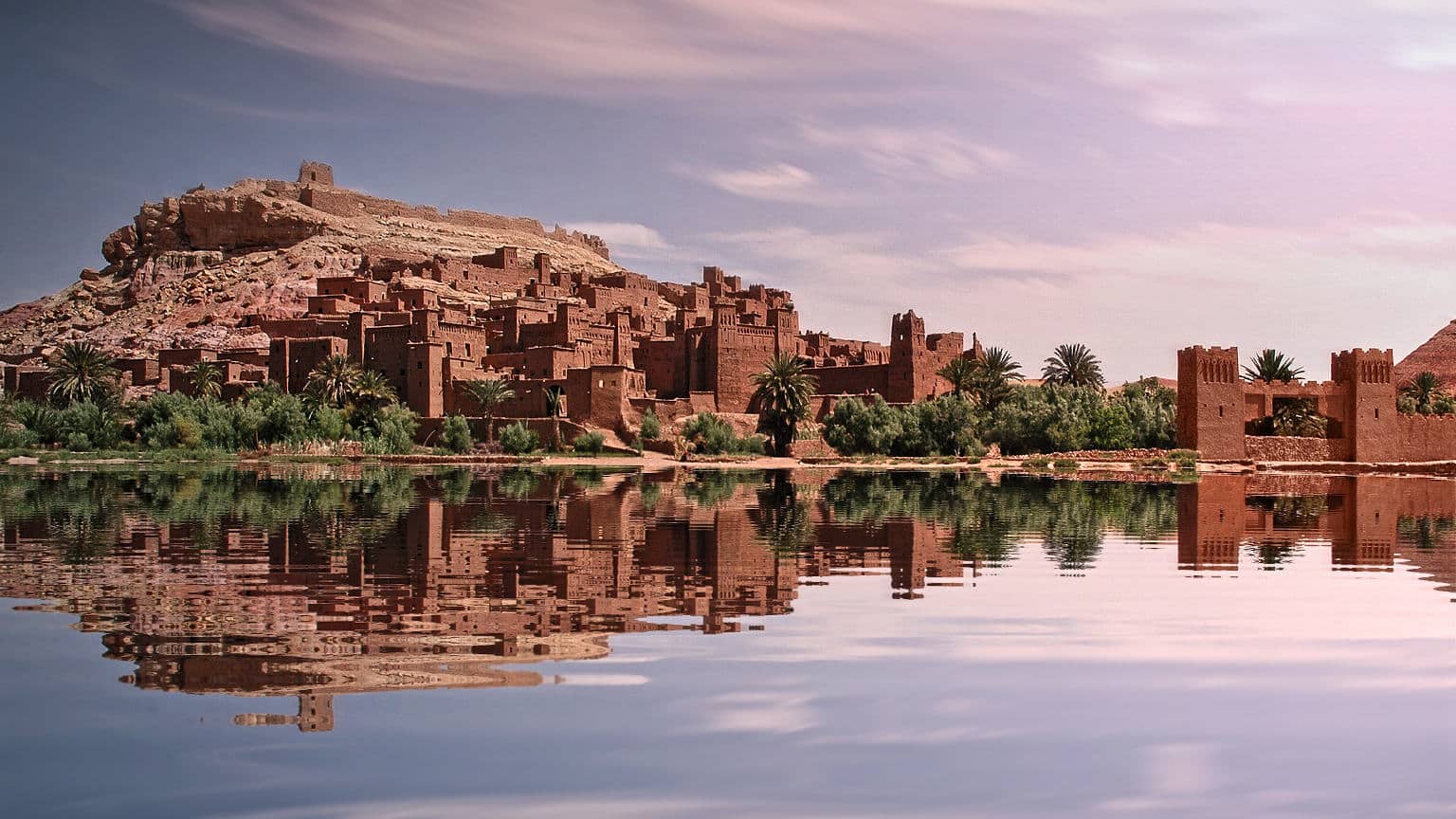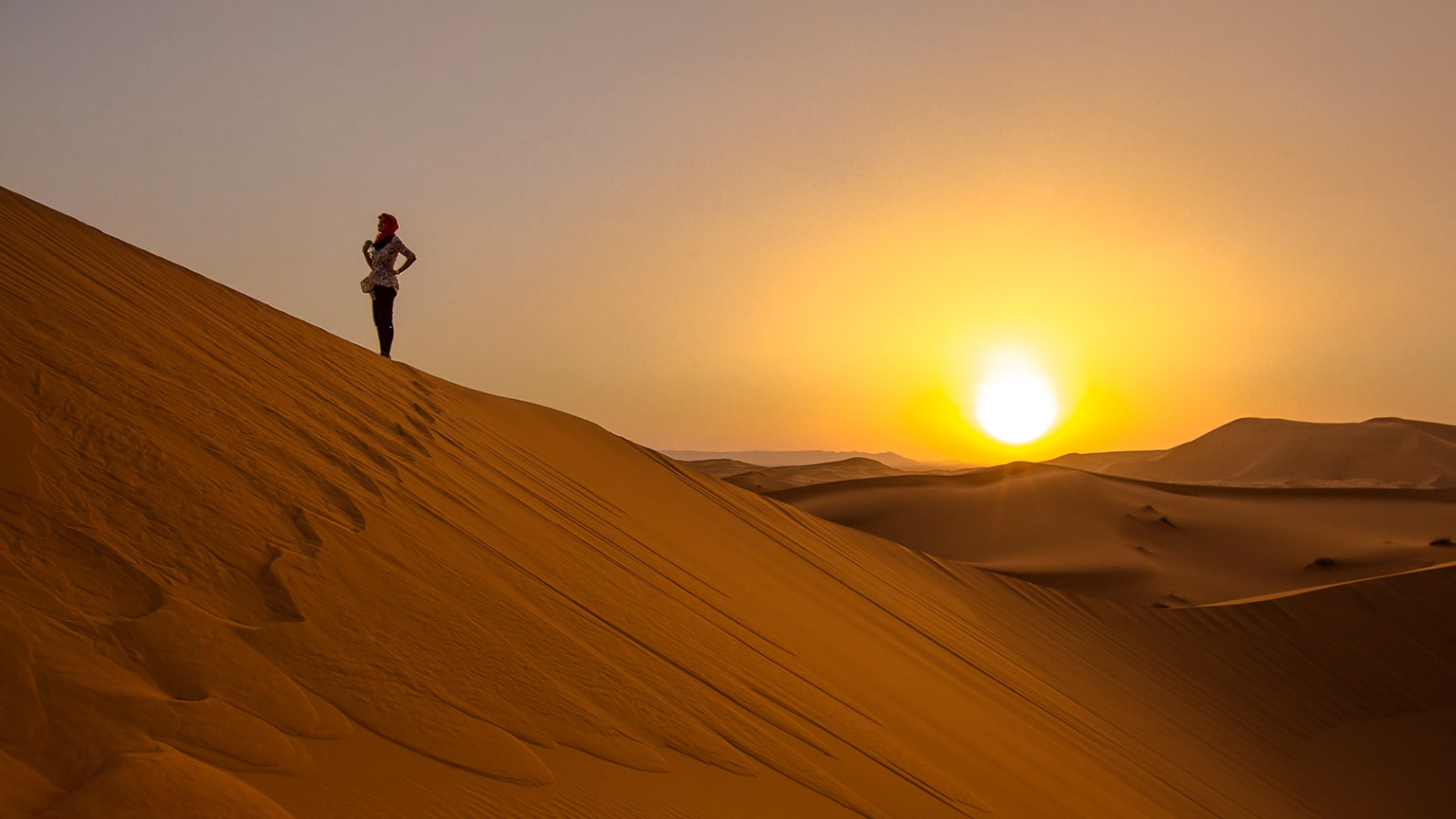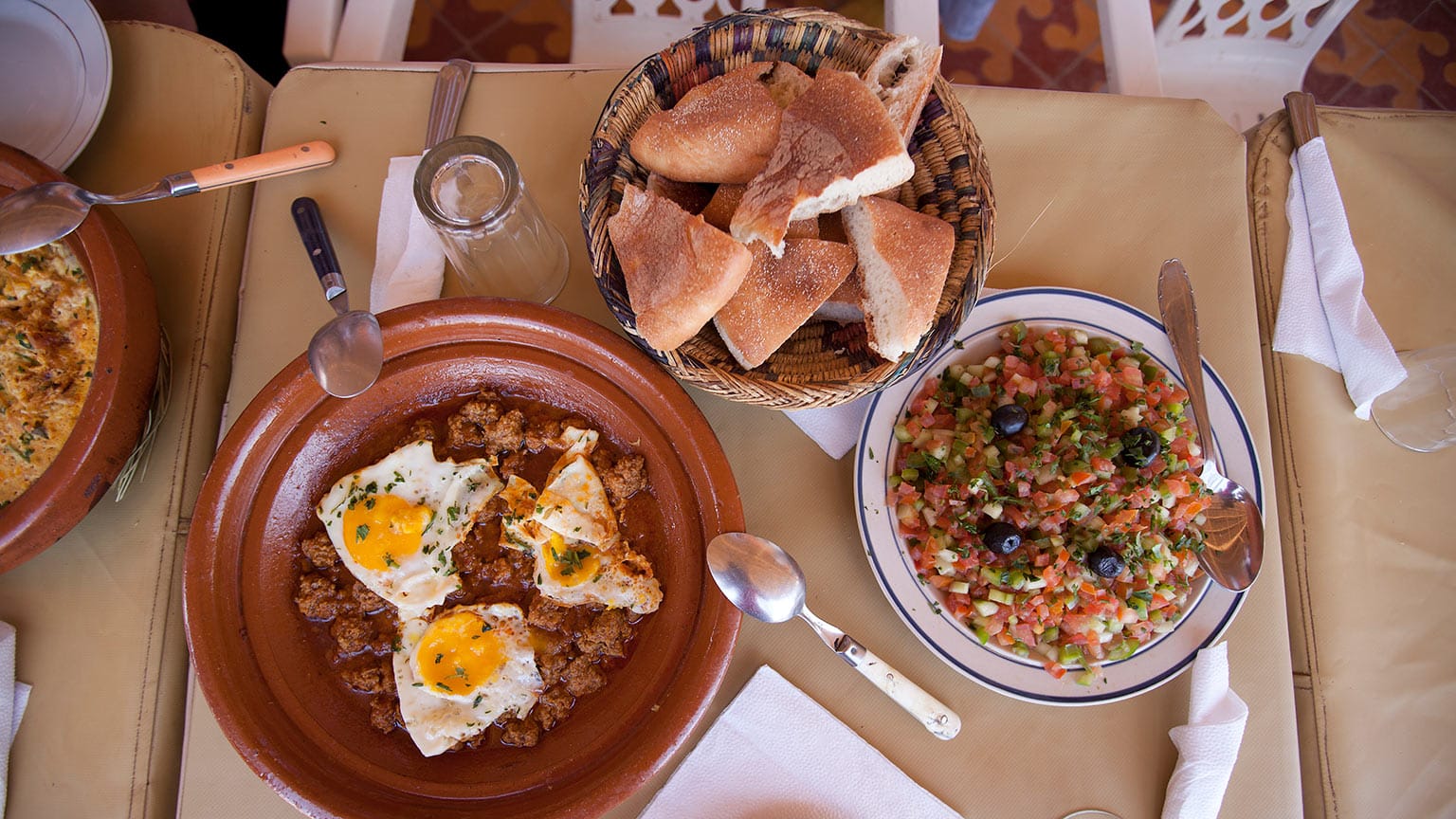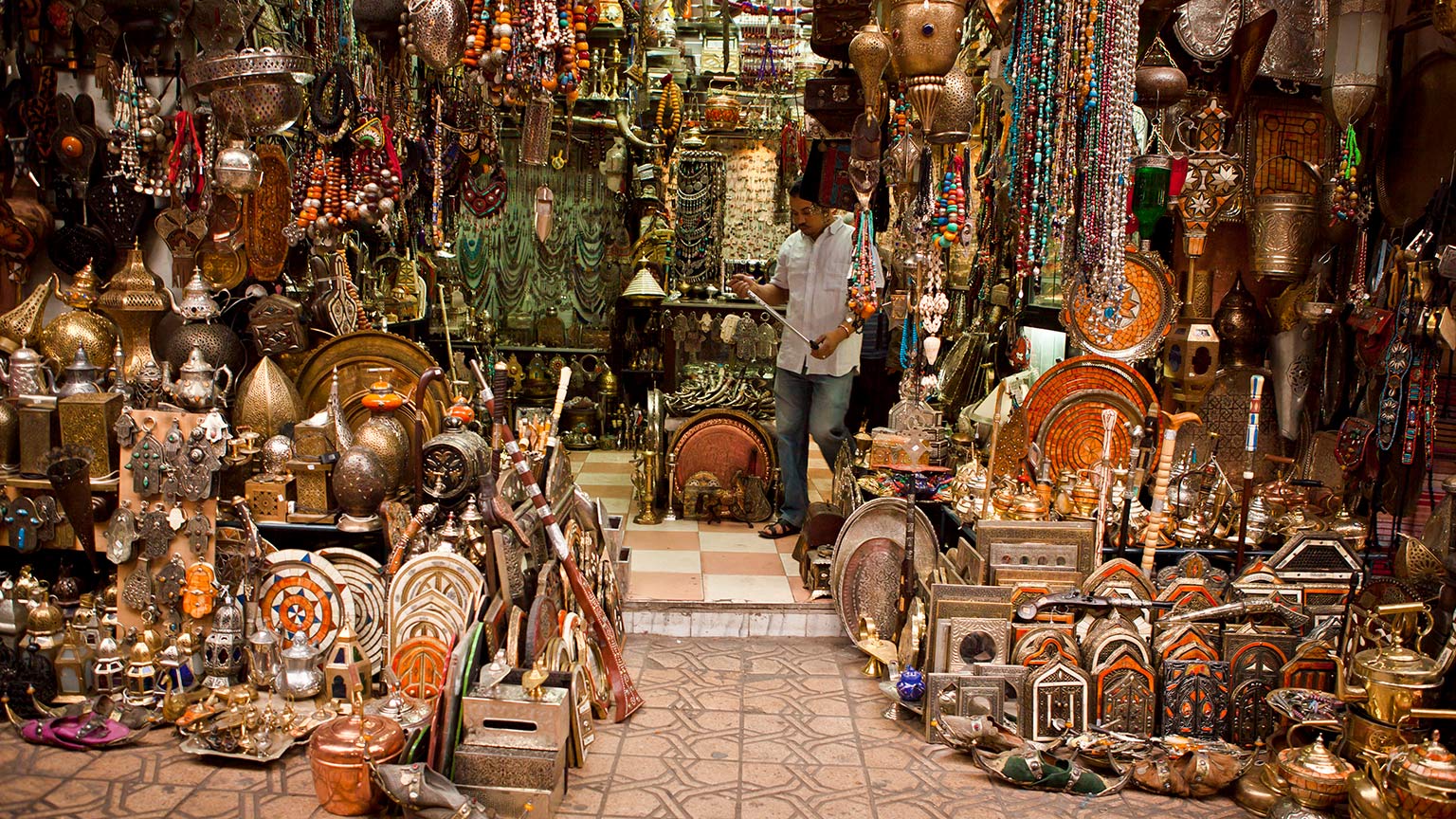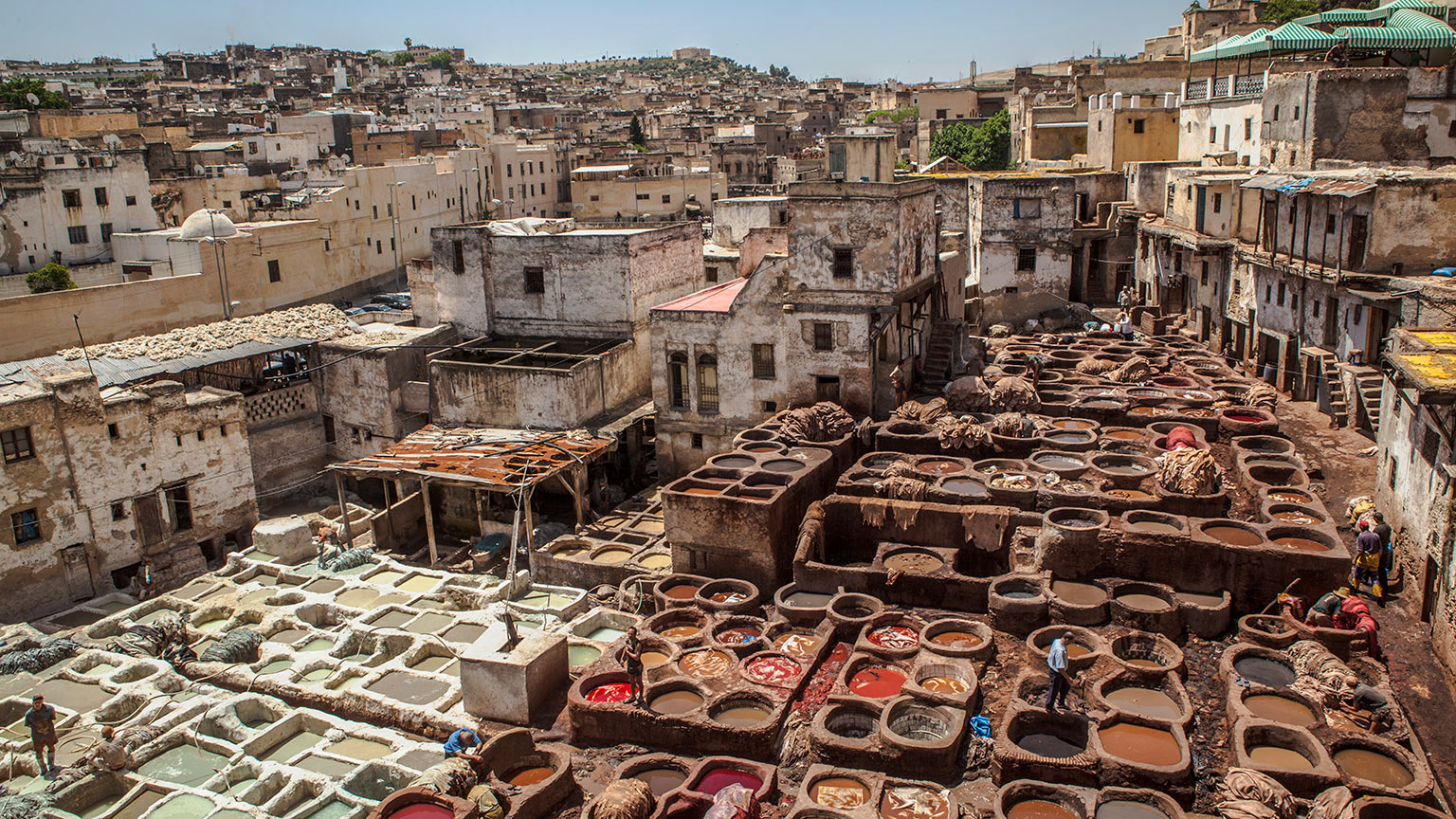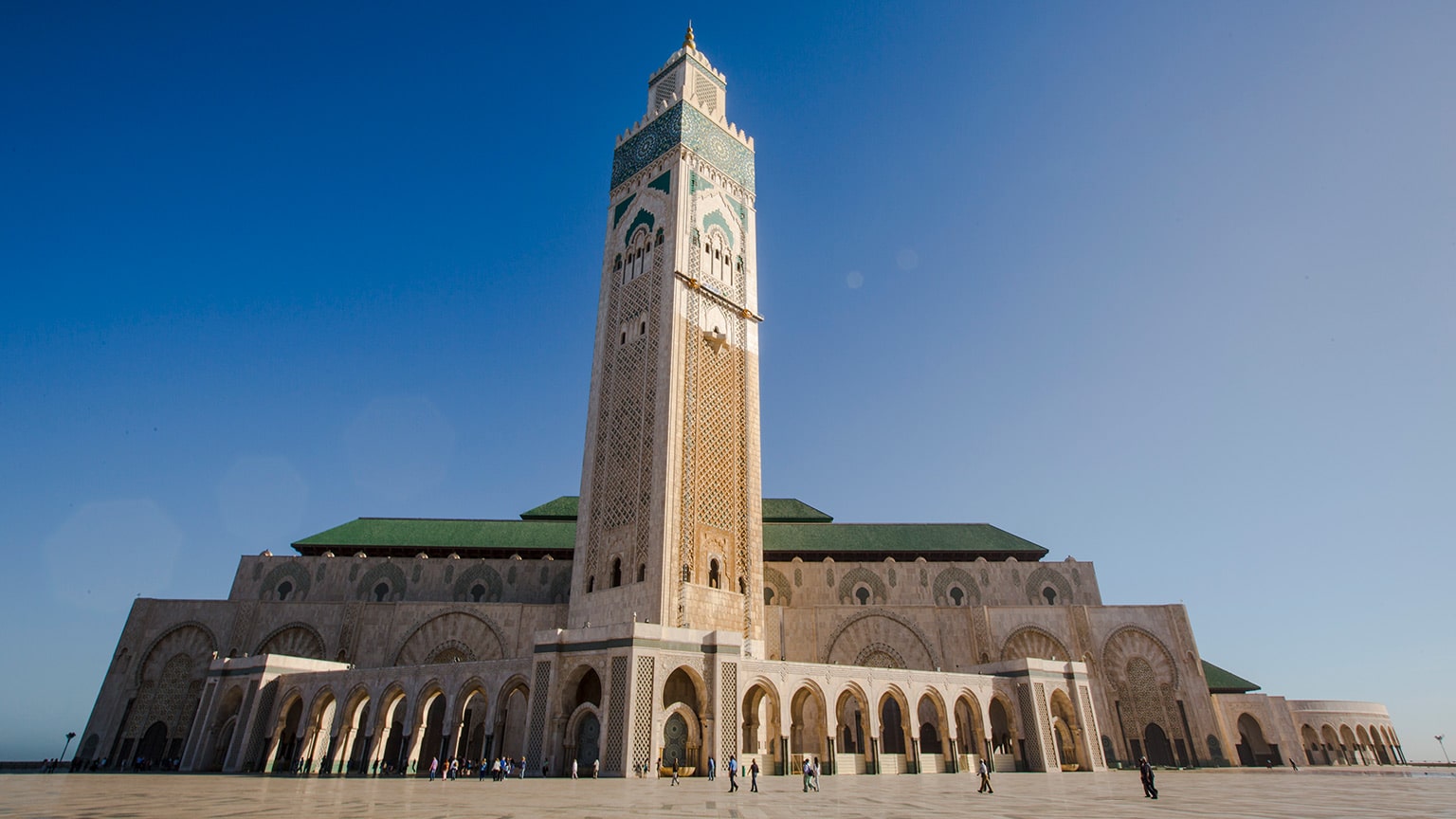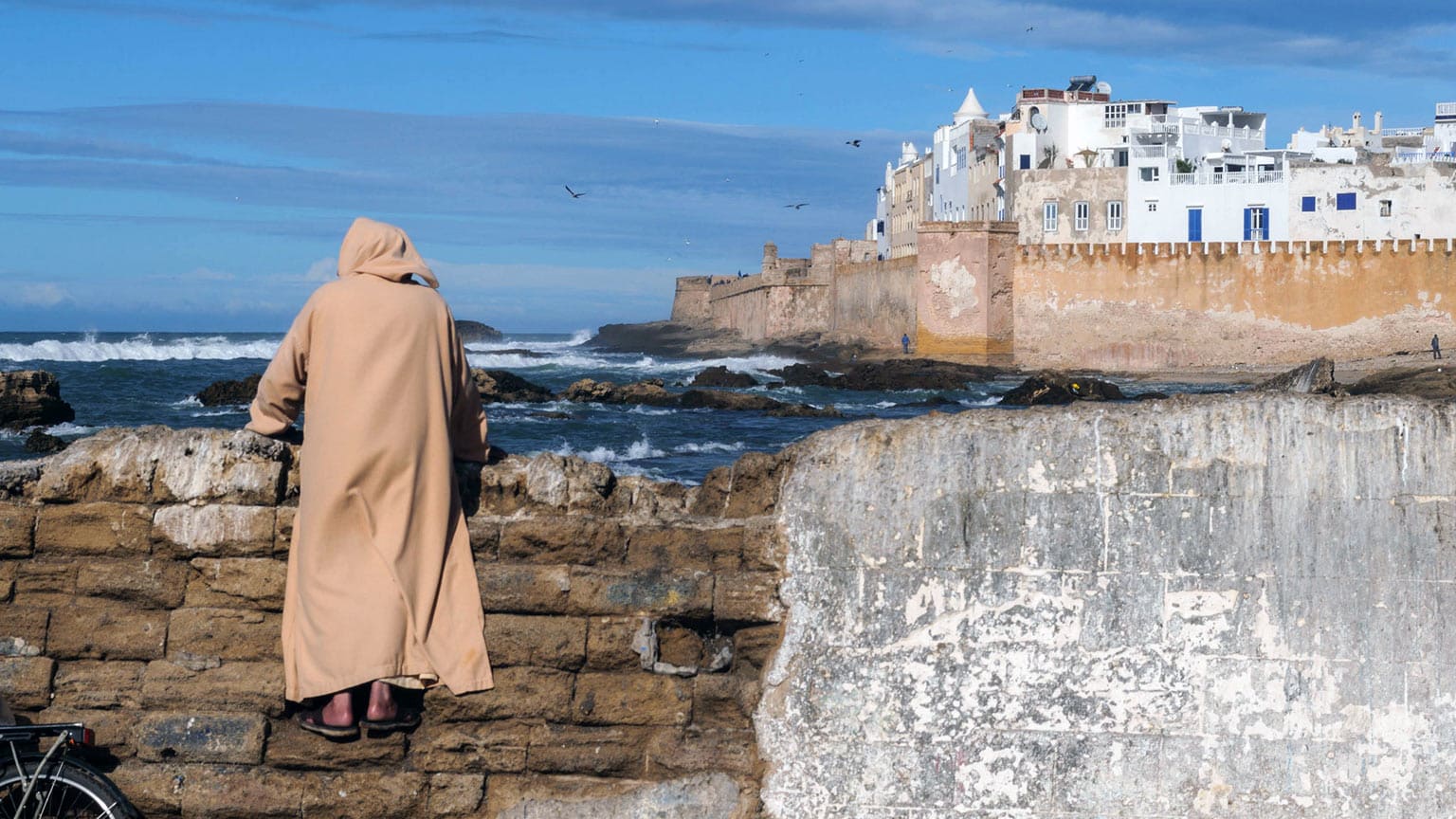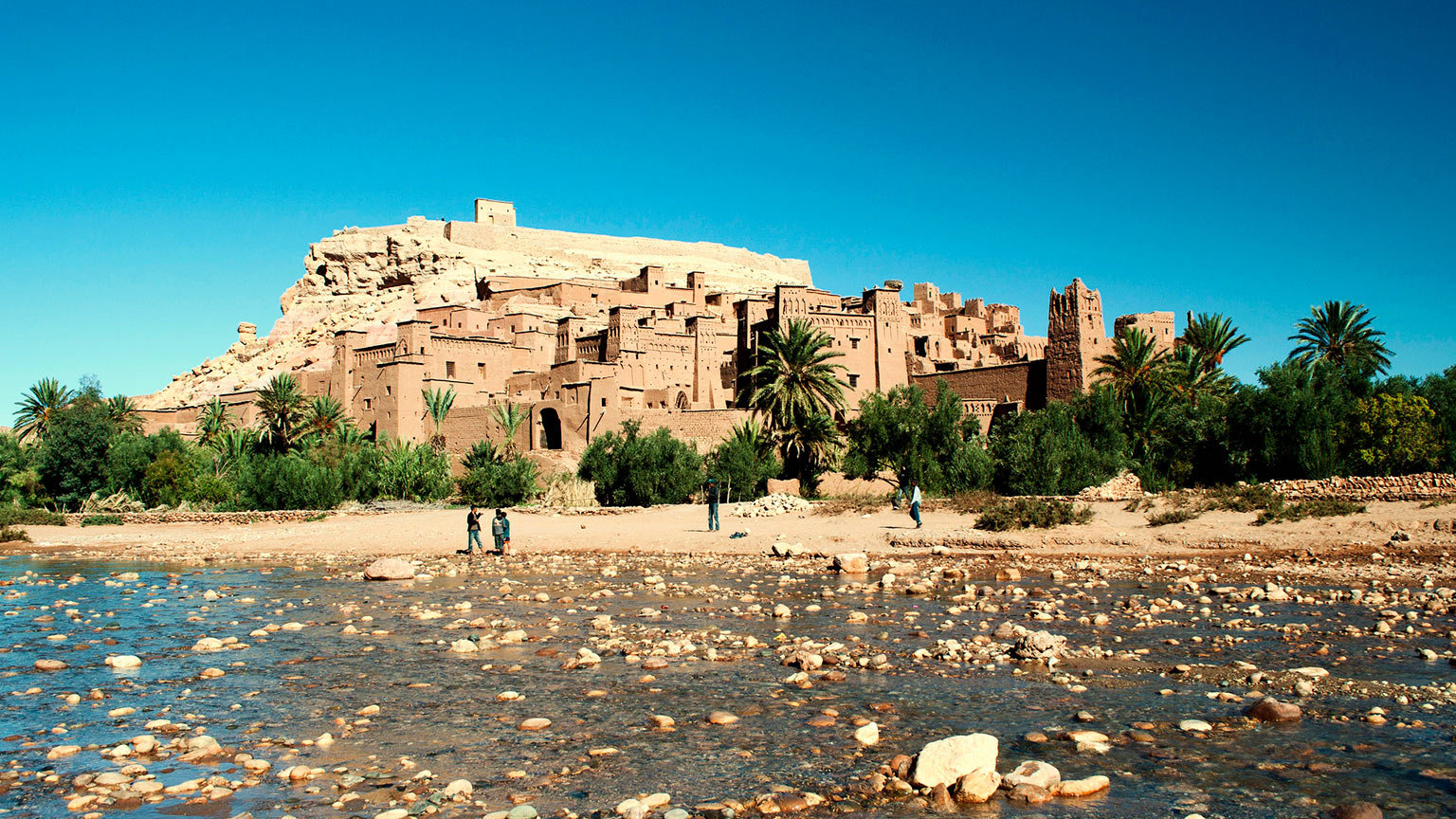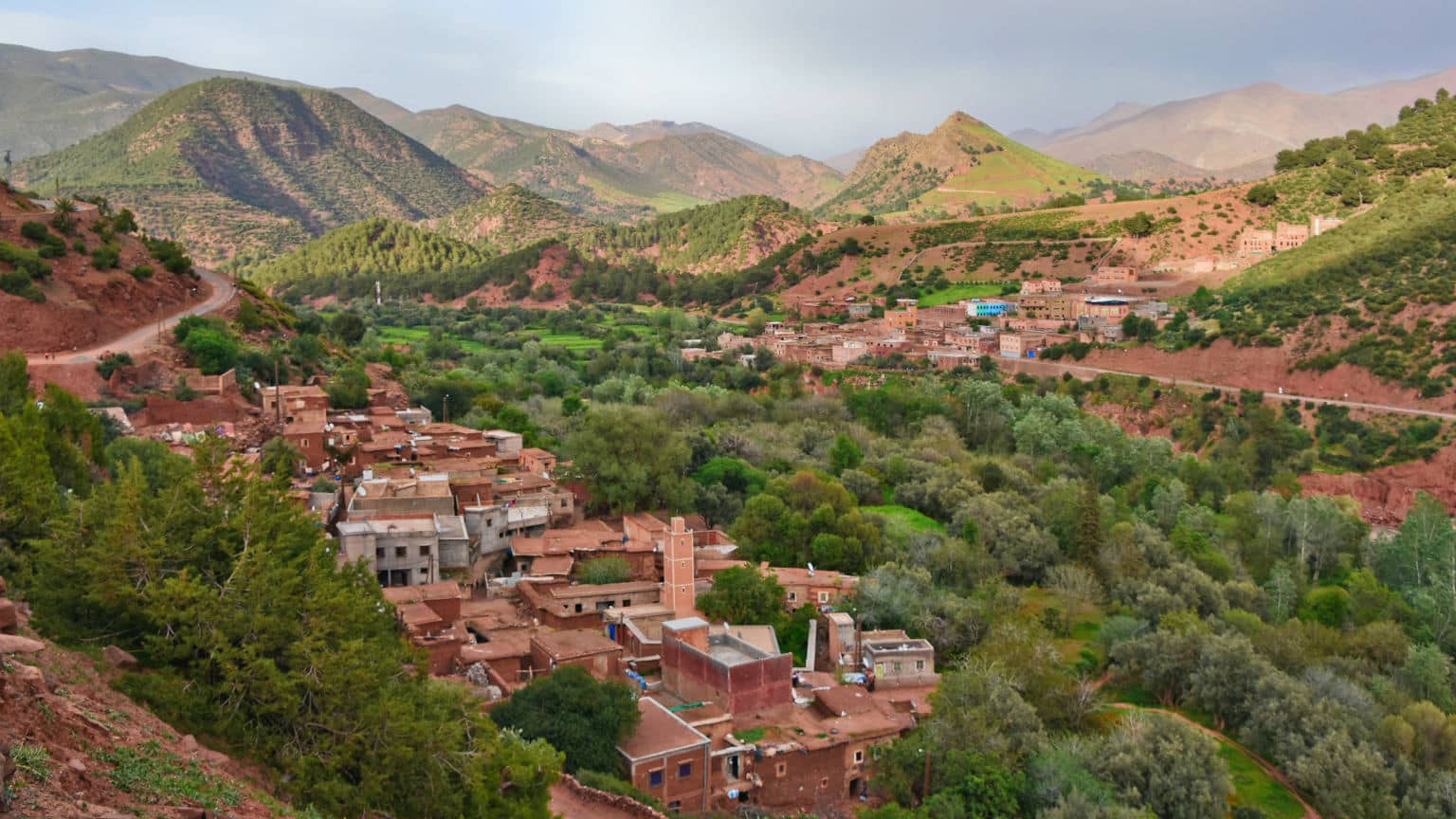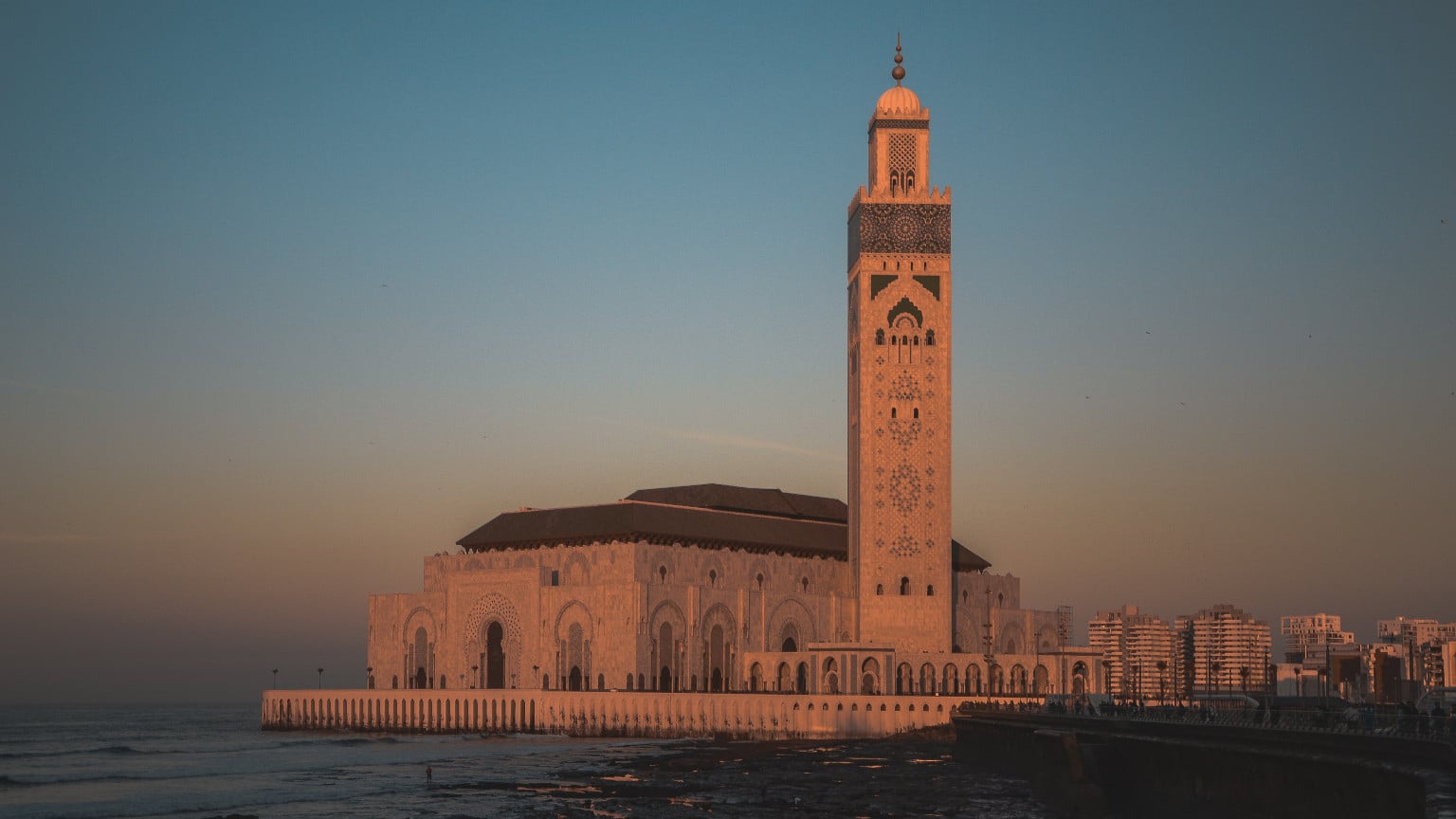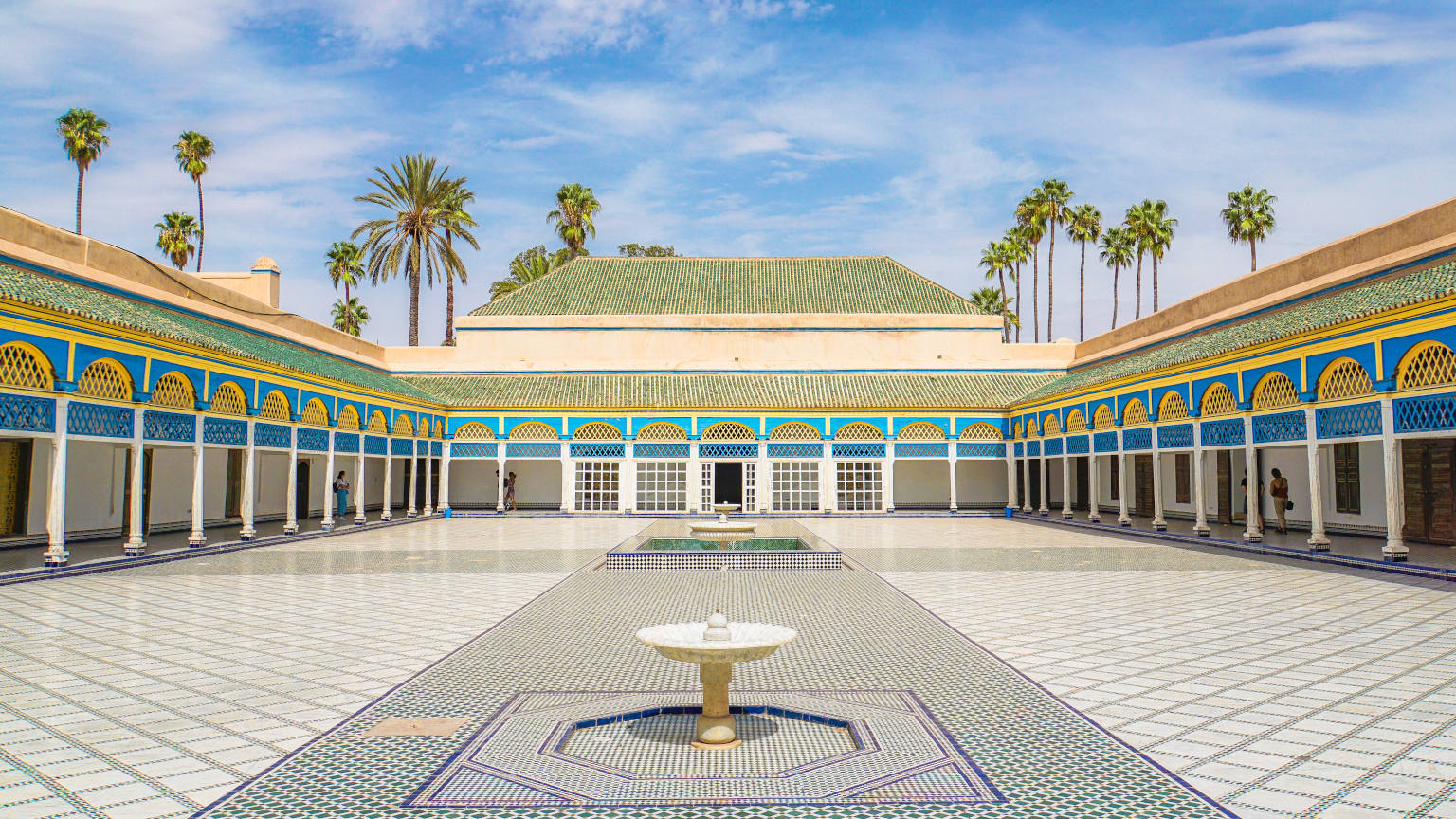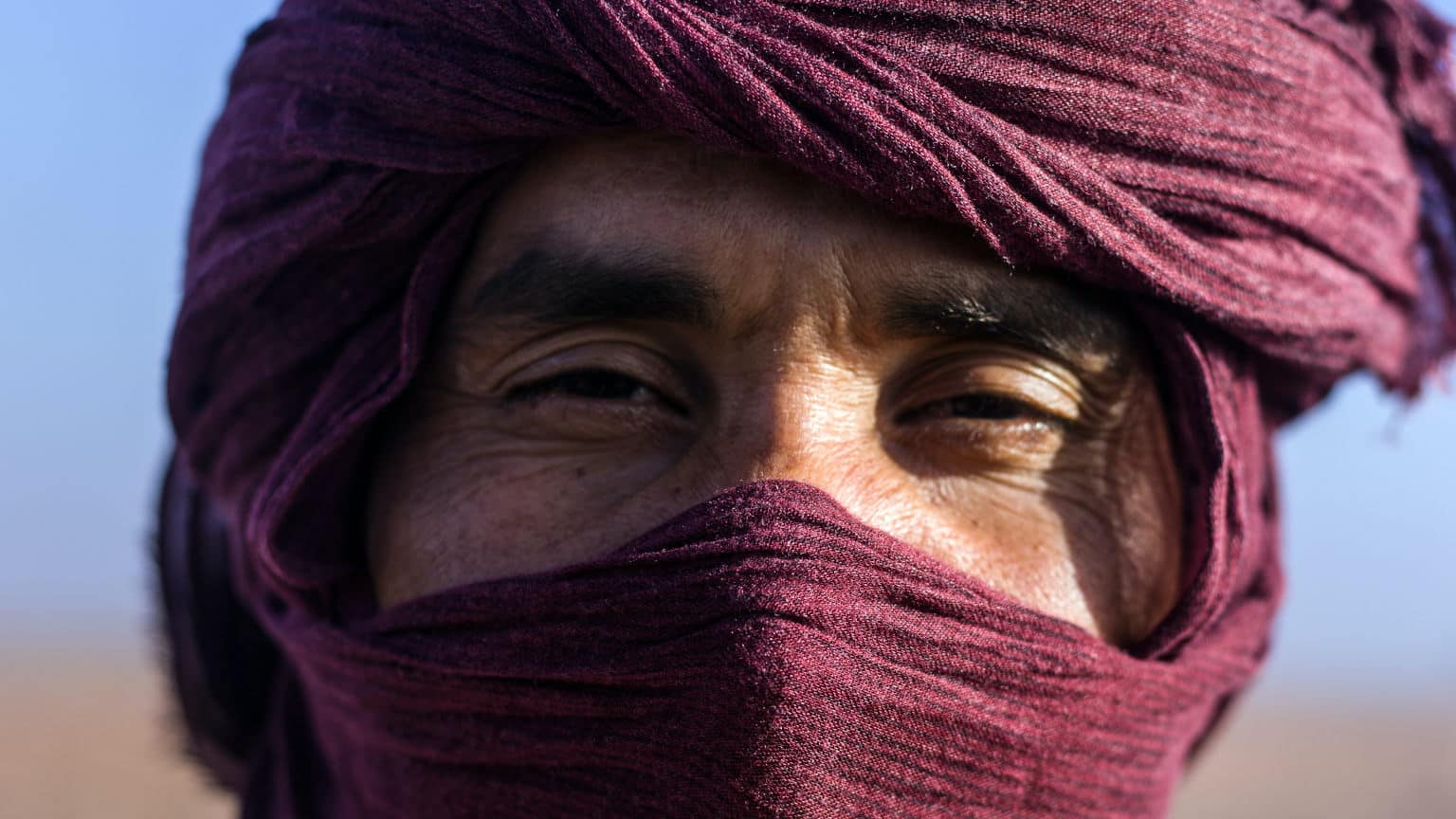Sold Out. Join the Waitlist.
 $1281
$1281
$1281
$1281
This program is sold out, but we are also offering this same itinerary with a start date of June 8th, June 10th, June 22nd, July 8th, and August 2nd. Our thoughts are with the people of Morocco following the September 8 earthquake. All of our upcoming Morocco programs will still run as planned. It is possible that the schedule for Day 10 may be altered, but that has not yet been determined. Bringing tourism income back to the affected areas will be vital to supporting the local communities.
Overview
Wander through kasbahs, spice markets, and cities pulsing with energy on this comprehensive Morocco trip. Climb onto a camel and explore the edge of the Sahara before admiring the views from the heights of the Atlas Mountains. Experience the energy of imperial cities as you explore souks stuffed with exotic wares. Then take a moment to appreciate an amazing adventure as you camp under the stars among some of the world’s largest sand dunes. Visit Morocco with us, all while earning professional development credit with other educators.
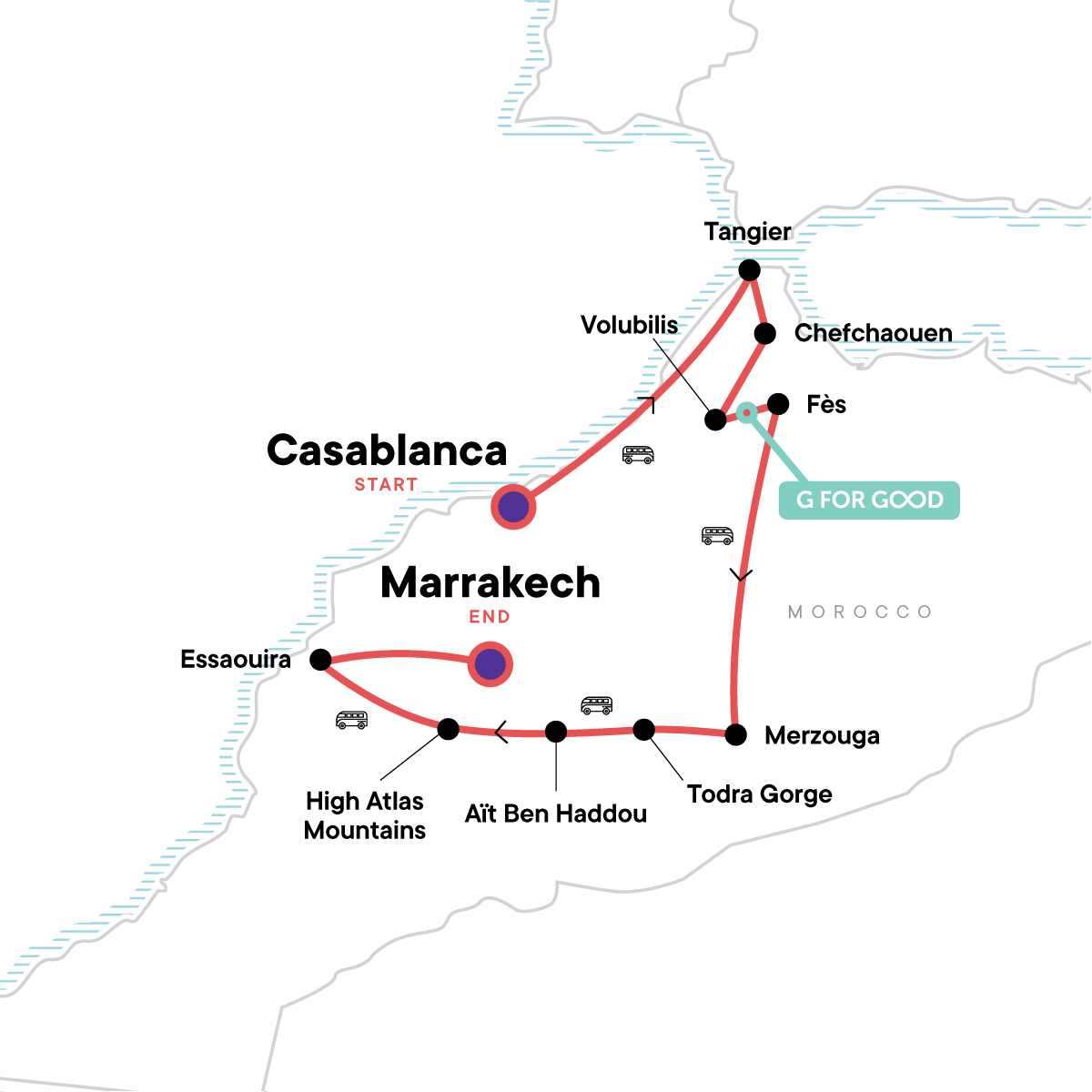
What's Included:
- Tangier guided tour
- Volubilis Roman ruins guided tour
- Mhaya Village Community Lunch
- Fes Medina guided tour
- Sahara Desert excursion with camel ride
- Todra Gorge stay with walk through local villages
- Aït Ben Haddou Kasbah visit
- High Atlas Mountains hike
- Mountain Gîte stay with traditional Moroccan meal
- Marrakech medina guided walk
- G Adventures Tour Leader throughout and local guides
- 14 breakfasts, 1 lunch, 3 dinners – allow $390-510 USD for meals not included
- Hotels (13 nts), gîte (1 nt, multi-share)
- All transport between destinations and to/from included activities by private air-con van, camel
What's Not Included:
- International air travel
- Incidentals
- Travel health and cancellation insurance
- Applicable visas
- Tips or gratuities
- Airport taxes
- Beverages
- Meals not mentioned in itinerary
- Optional tours and admission tickets
- Airport transfers
Itinerary Download PDF
Arrive in Casablanca at any time. Please note that this tour does not spend any time in Casablanca, and we recommend arriving a day or two early to fully explore the city. This will also give you time to adjust to the time difference, overcome any jetlag, and avoid any disruption to your trip due to flight delays or cancellations. We can book extra hotel nights for you in Casablanca before the trip. If you arrive early, you can explore Casablanca’s small medina, beachfront, and classic examples of Art Deco architecture. Be sure to also visit the spectacular Hassan II Mosque; entrance is only permitted via guided tours, which operate from Saturday to Thursday at 09:00, 10:00, 11:00, and 15:00. Tickets can be purchased at the mosque. Please double-check times with your hotel as they are subject to change, especially around Ramadan. Please note that check-in at the hotel is usually around 2:00-3:00 p.m. There are no planned activities until an intro meeting around 6:00 or 7:00 p.m., usually in the hotel lobby. Check for a sign or ask at the reception desk about the exact time and location of the group meeting. Please make every effort to arrive in time for this meeting. If you are delayed and will arrive late, please inform us. Your tour leader will then leave you a message at the front desk informing you of where and when to meet up tomorrow. After the meeting, you might choose to get dinner at a nearby restaurant with your traveling companions and your tour leader to further get to know one another. Accommodation: Hotel Campanile Casablanca (or similar) * For the actual hotel your specific departure will be using, please check your voucher.
Depart in the morning for Tangier. Tangier is an exotic mix of influences, located at the northern tip of Morocco. With culture, cuisine, and language coming from North Africa, Spain, Portugal, and France, this bustling port city is unique and fascinating. Take a guided tour of city sites, including the medina, kasbah, Grand Socco (a bustling square at the entrance to the medina), and Petit Socco, a little square in the medina perfect for people-watching and mint tea-drinking. Marvel at the panoramic views of Gibraltar, Tarifa, and the meeting point between the Atlantic Ocean and the Mediterranean Sea. In the afternoon, continue on to Chefchaouen. Chefchaouen is a gorgeous mountain town in northern Morocco. It is often skipped when traveling the standard route around Morocco but is truly one of the most special places to visit. Set in the Rif Mountains, this town’s white-washed buildings with blue accents make it one of the most picturesque places in the country. Known as the Blue City, the distinctive blue color was added by the city’s Jewish population who lived there as refugees in the 1930s. The main square is lined with cafés and shops selling handicrafts that are often not available elsewhere in the country. Approximate travel time: 5 hrs (Casablanca to Tangier) by private vehicle; 2 hrs (Tangier to Chefchaouen) by private vehicle Accommodation: Hotel Madrid Chefchaouen (or similar) Meals included: Breakfast
The city of Chefchaouen, whitewashed in different shades of blue, is spectacular on its own, but with the surrounding mountains, it's a sight to behold. Options include relaxing at a traditional Hammam spa, visiting a local weavers' cooperative, and exploring the town. You may choose to lace up your hiking boots and trek through the scenic Rif Mountains, the perfect natural playground for adventure seekers. Hike for 3-4 hours along lush mountains, passing small waterfalls and streams en route to the Spanish Mosque for spectacular panoramic views of Chefchaouen. Continue on through the mountains, passing plantations and stopping for a traditional lunch at a local gîte. Once you reach the piste, jump in a jeep and head back to the main road to meet your driver. At sunset, opt to visit the Spanish Mosque for a stunning panoramic view of the city. Accommodation: Hotel Madrid Chefchaouen (or similar) Meals included: Breakfast
We leave Chefchaouen and drive to M'Haya, where we enjoy a traditional lunch that benefits rural Moroccan women and children. This lunch program provides access to education opportunities and healthcare services. The proceeds from this lunch program help support vocational training for rural women, allowing them to support their families and children. Enjoy a traditional home-cooked Moroccan meal and meet some of the women who are part of this program. In the afternoon, we continue through the rolling hills to the ruins of Volubilis, the best-preserved Roman ruins in this part of Northern Africa. Listen to a certified local guide explain life in the Roman Empire at this UNESCO World Heritage Site. Peer into old bathhouses, marvel at the still-present mosaic floors, and gaze up at towering marble pillars. Hear stories about life in this Roman city that will leave you in awe of just how far their empire stretched. Afterward, continue to the imperial city of Fez, one of Morocco's most interesting cities. Fez was built by the French during their Protectorate of Morocco. This area has the feel of a French provincial town with its cafés, restaurants, and wide boulevards. Enjoy free time this evening. You may opt to spend some time in the medina checking out carpet shops, sampling local delicacies at the food stalls, or shopping for leather goods. Prepare to bargain, just don't get lost wandering the passageways! Approximate travel time: 4.5 hrs (Chefchaouen to Meknes); 45 mins (Meknes to Volubilis); 2 hrs (Volubilis to Fez) Accommodation: Hotel Mounia Fes (or similar) Meals included: Breakfast | Lunch
The Fez medina is the world’s largest living medieval medina and a UNESCO World Heritage Site. Enter through one of the great gates into the chaos and follow a local guide through this 1.4-sq. mile medina with more than 9,000 winding streets. We will explore the artisan quarters, sample treats from the carts, visit the mausoleum and the Al Qarawiyin University, and view Fez's famous leather tannery from above. Some buildings in the medina date back to the 9th century; there are 350 mosques in the medina that are still in use today. Please note: Only certified local Fez guides are allowed to guide in the medina. During your free time, your tour leader (a nationally certified guide) cannot accompany you here. Enjoy free time this afternoon. Accommodation: Hotel Mounia Fes (or similar) Meals included: Breakfast
Today we have a full travel day through the diverse landscapes that make Morocco so unique. As you pass through cedar and pine forests, keep an eye out for Barbary Macaques. Pass over the Middle Atlas Mountains through the pre-desert countryside with its deep gorges filled with a splendid oasis of green palm groves, finally arriving at the sand dunes of the Sahara Desert. We spend the night in a desert auberge, located right on the edge of the dunes. Here we will have a local-style dinner and spend the night. Please note: some rooms may have shared bathroom facilities at the desert auberge. Approximate travel time: 10-11 hrs, including stops Accommodation: Auberge Dunes D'Or (or similar) Meals included: Breakfast | Dinner
Spend the cool morning relaxing or exploring the undulating golden sand of the dunes on your own. You can also pre-book an optional excursion to view the dunes of the Sahara desert on a 4x4 excursion after registering for this program. You'll be driven around the sand dunes of Erg Chebbi, taking in the views of the seemingly endless sea of sand. Pass a kohl mine en route to the village of Khamlia. Witness the delightful sounds of the African music of Gnawa, played by members of the community, as you enjoy a cup of mint tea with the locals. In the late afternoon, take a camel ride deep into the dunes to watch the sunset. Local guides will teach you how to mount and dismount and other handy camel-related safety tips. Be sure to get them to teach you the trick of tying your turban to keep the desert sun off your face and add a little flair to your photos. This evening, indulge in a traditional dinner, then gather around a campfire under the stars near to your hotel. Listen to stories about life in this region and, perhaps, some traditional music on the drums. Approximate travel time: 1 hr by camel Accommodation: Auberge Dunes D'Or (or similar) Meals included: Breakfast | Dinner
Rise early to watch the sunrise. After breakfast, continue by private bus into the Todra Valley. The Todra River has carved out cliff-sided canyons through the mountains with the final 300 m of the gorge being the most spectacular, as the canyon narrows to a flat stony track as little as 10 m (33 ft) wide in places with sheer and smooth rock walls up to 160 m (525 ft) high on each side. Today, the Todra River looks more like a stream as it runs its way through the gorge, with hotels and restaurants huddled against the steep walls. It is easy to walk through the gorge, as there is a well-maintained dirt road to walk along. This scenic and serene spot is great for hiking, relaxing on the edge of the river, or sampling some local Amazigh delicacies. Approximate travel time: 3.5 hrs, including stops Accommodation: Hotel Amazir (or similar) Meals included: Breakfast
This morning, we continue along the "Route of 1,000 Kasbahs" to the thriving town of Ouarzazate for a lunch stop. This town is home to Atlas Film Studios, where many films have been shot over the years, including Lawrence of Arabia and Gladiator. Continue on to the fascinating and beautiful village of Aït Ben Haddou, a wonderful example of a kasbah (a type of fortress). Explore the UNESCO World Heritage Site with your tour leader. Of all the remaining kasbahs in Morocco, the walls and interior of this area are the most intact. Like many of the earthen-built fortresses in Ouarzazate, Aït Ben Haddou has been used in many film and television productions like Gladiator, Babel, and Game of Thrones. In the evening, there may be a chance for an optional cooking class. Learn the secrets of how to make the perfect tagine and then sample your skills for your dinner. Approximate travel time: 4 hrs Accommodation: La Rose du Sable Ait Benhaddou (or similar) Meals included: Breakfast
We leave the pre-desert country for the magnificent High Atlas Mountains landscape, crossing the Tizi n'Tichka pass at 2260 m, before heading into the splendid Toubkal National Park. We pass through small villages on winding mountain roads, arriving at the village of Imlil. With our main luggage transported for us, embark on the 1-hour hike from Imlil to the little village of Aroumd (Aremd), arriving at our simple mountain gîte for the night. Breathe in the fresh mountain air while taking in amazing views of the surrounding Atlas Mountains before sitting down to a traditional, homemade dinner made with local produce. The hike to the gîte is uphill, so take it at your own pace! Some participants have recommended hiking poles for those with knee issues. Accommodation is multi-share, up to six beds in each room. Bedding is provided, but you will need to bring your own towel. Bathroom facilities are shared. Approximate travel time: 5 hrs (Ait Ben Haddou to Imlil) by private vehicle; 1 hr (Imlil to Aroumd) on foot Accommodation: Auberge Tafraout Armed (or similar) Meals included: Breakfast | Dinner
After breakfast, take a scenic hike back down the mountain to meet the van in Imlil and head to the coastal town of Essaouira, arriving mid-afternoon. The rest of the day is free to explore as you wish. Essaouira is a funky, Portuguese-flavoured, hippie coastal village. Browse the many shops for leather, jewelry, lamps, or trinkets. Watch the brightly-painted ships bring their catch into the busy harbor or take a stroll along the long, sandy beach. This is the perfect place to enjoy some local seafood and unwind. Approximate travel time: 1 hr (Aremd to Imlil) on foot; 5 hrs (Imlil to Essaouira), including stops, by private vehicle Accommodation: Riad Nakhla Essaouira (or similar) Meals included: Breakfast
Today is free to browse the many shops, watch the brightly painted ships bring their catch into the busy harbor, or take a stroll along the long, sandy beach. It's a perfect place to enjoy some local seafood and unwind. You might even like to enjoy some of the wide variety of activities on offer such as windsurfing and horseback riding. Your tour leader can arrange camel riding on the beach in Essaouira for you. Please ask them for more details if you are interested. If you want to soothe aching muscles, you can pre-book the Traditional Hammam Experience ($60 USD) with us. In a Moroccan bathhouse, begin with a dry or hot room to prepare your skin and body, followed by a hot steam room. Enjoy a body scrub and massage followed by a traditional mint tea. Accommodation: Riad Nakhla Essaouira (or similar) Meals included: Bre
In the morning, we continue our journey to Marrakech. Once arriving in the "Red City," join your certified city guide for a tour of the Marrakech medina. Shop to your heart’s content in the souks with their narrow, winding streets as you search out spices, traditional jalabas and slippers, or the famous Moroccan lanterns. Visit the historical Koutoubia Minaret and gardens, the Mellah, and the Saadian Tombs, a complex of sepulchers and mausoleums that house the remains of Saadian Sultan Ahmed Al Mansour Ed Dahb. The tombs were sealed off until their re-discovery in 1917. Tour the grounds of the Bahia Palace, marveling at the intricate decoration, and experience the sights and sounds of the bustling Jemaa el-Fnaa square. Once the tour is finished, you are free to discover the secrets of this amazing, ancient city at your leisure. Once you’ve tired yourself out, relax at one of the tea houses around the square, indulging in the ubiquitous sweet mint tea and watching the hustle and bustle from your shady spot. End the day like a local with an optional group dinner in the famous food stalls of Djemaa el Fna. Approximate travel time: 3 hrs by private vehicle Accommodation: Hotel Oudaya Marrakech (or similar) Meals included: Breakfast
Today is a free day to explore. You may opt to get up early and catch the sunrise over Marrakech by pre-booking the Hot Air Balloon excursion ($225 USD). Another great place to start your day is Djemaa el Fna square, in the heart of the medina. The square changes its offerings throughout the day. In the morning, you can wander past the fresh orange juice stalls, water sellers in colorful costumes with traditional leather water bags, brass cups, and street performers. As the day progresses the snake charmers are replaced by Chleuh dancing-boys, storytellers, magicians, and peddlers of traditional medicines. As the sun sets, the square fills with dozens of food stalls, packed with locals and the entertaining chefs and waiters. Grab a spot on a bench with the other diners and try the Tanjia (slow-cooked lamb), Harira soup, grilled seafood, famous Moroccan couscous, tajine, snails, or even sheep’s head for the truly adventurous. Wash it all down with some spiced tea. See our list below of optional activities for more recommendations about how to spend your free time. Accommodation: Hotel Oudaya Marrakech (or similar) Meals included: Breakfast
There are no planned activities today, so you may depart Marrakech at any time. If your departure flight is out of Casablanca, affordable transfer options include a 3.5-hour train that runs a few times a day or direct flights from Marrakech to Casablanca. If you wish to extend your stay in Marrakech, consider booking post-tour accommodation with us. Please note that check-out time from the hotel is usually mid-morning, but luggage storage services are available at the reception desk. Want more adventure? Book two or more GEEO programs in the same school year and receive a discount! GEEO will give you 10% off of the lesser value program(s) (up to 3 programs per year). If you would like to extend your time abroad but don't see another GEEO program that interests you, let us know. We can work with you to find a trip from our tour operator’s much larger catalog. Their tours are open to the general public and not designed specifically for educators, but we can still offer you and your travel companions a discounted educator price on any additional tours that you book. Meals included: Breakfast
*Itinerary Disclaimer: While it is our intention to adhere to the routes described on our website, there is a certain amount of flexibility built into the itinerary and on occasion it may be necessary, or desirable, to make alterations. The itinerary is brief, as we never know exactly where our journey will take us. Due to our style of travel and the regions we visit, travel can be unpredictable. The information on our website is a general guide to the tour and region, and any mention of specific destinations or wildlife is by no means a guarantee that they will be visited or encountered. Additionally, any travel times listed are approximations only and subject to vary due to local circumstances.
Details
Frequently Asked Questions
Please read our general FAQs, where you can find essential information that applies to all of our programs.Resources to Learn & Teach about Morocco
Visit our recommended reading page to see the list of books GEEO recommends reading before your program (this is not required reading). We also have lesson plans and Pinterest boards that may be useful for you as you learn about your destination and prepare to bring lessons back to your classroom.Terms and Conditions
It is very important for you to visit our Terms and Conditions page before signing up for this program.GEEO Program Confirmation Process
We require a minimum of 6 participants for most GEEO programs. We officially confirm that a program will run once at least 8 people have signed up, which provides a margin for individual cancellations. Nearly all GEEO programs ultimately meet this enrollment quota, and in the rare event that a program does not meet the minimum requirement and GEEO cancels the program, we will work with you to find a suitable alternative or provide a refund of your deposit if you prefer. We encourage you to sign up for any program that interests you, and we will notify the entire group once 6 people are booked and again once 8 people are booked. We always emphasize the importance of exercising caution when making non-refundable travel arrangements, especially given the unpredictable nature of travel. For example, we typically recommend booking flights with flexible change/cancellation policies.Cancellation policy
All cancellations must be submitted to GEEO in written form by emailing your request for cancellation to travel@geeo.org. If you do not receive a confirmation that we have received your written cancellation request, please call us at 1-877-600-0105. Verbal cancellation requests will not be honored.- If you cancel 60 days or more prior to departure, all your program fee payments will be refunded besides your $350 deposit which is kept on file for future use
- If you cancel between 30 and 59 days prior to departure, you will receive a 50% refund and your deposit is kept on file for future use
- If you cancel within 30 days of departure, you will receive no refund, but your deposit is kept on file for future use
Trip Notes
- PACE: This is a fast-paced itinerary that covers a lot of ground in the available time, but it also means some early starts, some long drives in the minivan, and less free time than many other GEEO programs. We feel that, if you enter this trip with this knowledge and expectation, you will appreciate even more the variety of locations we are able to include in this itinerary.
- TRANSPORT: We use a 16-seater minivan for this tour. With a full group, every seat will be used. The legroom in the minivan is possibly smaller than you may be used to and taller passengers may find space a little cramped. It is important to be aware that as it is not a legal requirement in buses in Morocco: your vehicle may not be equipped with seat belts. While the minivans have air conditioning, summer temperatures in Morocco can easily reach over 100 degrees Fahrenheit. As such, when the outside temperature is so hot, a minibus air conditioning system will not be able to cool the bus to the temperatures you may be used to enjoying at home. Please bear in mind that traveling in Morocco in summer will inevitably involve very hot temperatures and you may experience some discomfort when traveling.
- CAMEL RIDE: Please note, you can skip the camel rides if you wish and hang out at our hotel or the nearby sand dunes. It is not possible to reach the middle of the dunes, where we watch the sunset, by 4WD or any other vehicle. There is the option to walk (can be very hot and tiring) for those who cannot or prefer not to ride a camel.
- GETTING HOME: This program ends in Marrakech. Most international flights depart out of Casablanca. Make sure that you arrange your flights correctly. Keep in mind there are flights from Marrakech to Casablanca as well as a train that runs a few times a day and takes 3.5 hours.
- CLOTHING: To avoid unwanted attention in rural areas, dressing modestly is advised for parts of Morocco. A general rule of thumb for women in rural areas is to keep your shoulders and knees covered up. It is fine to dress how you like in Fes, Sahara, and Marrakech, but keep in mind, less exposed flesh draws less attention.
- SMALL CHANGE: For bathrooms, you will need small bills, like 1 or 2 Dirham. We recommend visiting a bank early on in the trip and exchanging larger bills for small bills so you always have small change handy.
Group Leader Description
All GEEO/G Adventures group trips are accompanied by one of G Adventure’s group leaders, which they refer to as Chief Experience Officers (CEO). The aim of the group leader is to take the hassle out of your travels and to help you have the best trip possible. They will provide information on the places you are traveling through, offer suggestions for things to do and see, recommend great local eating venues, and introduce you to our local friends. Our itineraries often have plenty of free time to explore on your own. While not being guides in the traditional sense you can expect them to have a broad general knowledge of the countries visited on the trip, including historical, cultural, religious and social aspects. We also use local guides where we think more specific knowledge will add to the enjoyment of the places we are visiting – we think it’s the best of both worlds.Fitness Level
Trip includes light walking and hiking that is suitable for most fitness levels. The roughest parts are the optional Rif Mountains hike and the ascent to the mountain gîte. There should be a van or donkey that can help get you to the gîte, but avoid the Rif hike if you aren’t in very good shape. The camel riding is pretty easy, but thicker pants are recommended.Single Travelers
Half of GEEO’s participants travel by themselves, so please don’t worry if you do not have a travel companion for your trip. Our program fee is for one traveler in double-occupancy accommodation, and GEEO can find you a roommate of the same gender if you do not have a travel companion. Most of our programs have a “My Own Room” option, also known as a “Single Supplement,” which is an extra fee that you can pay to have a room to yourself. You will only incur an additional charge if you specifically request a single room. To see the price for the “My Own Room” option, please find your program on our extra services page. If you want to room alone, please email travel@geeo.org to request a single room. Please note that if you book the "My Own Room" option for this program, you will receive your own single accommodation for all nights except for night 10 (mountain gîte).Joining Instructions
Day 1 is an arrival day, and no activities have been planned. Upon arrival to the city on Day 1, or earlier if you have booked pre-accommodation with us, please make your way to the joining hotel. Please note: Check-in time will be in the afternoon. Once you arrive at the hotel, look for a note at reception from your tour leader. This note will give the details of your Welcome Meeting on Day 1, usually between 6:00 p.m. and 7:00 p.m., during which you will get a chance to meet your tour leader and other travelers, as well as learn more about how the tour will run. If you don’t see a note, please ask reception for details. If you miss the Welcome Meeting, your tour leader will leave a note at reception for you with any information you may need and with instructions for the next morning. If you have pre-arranged an arrival transfer, please look for the driver holding a G Adventures sign outside of the airport building of Terminal 1. Please approach them and ask them who they are supposed to be picking up (do not tell them your name, they should have this information already). Once they give you the correct name, have your passport ready to show them, and you will be on your way! Alternatively, you can take a taxi from the airport entrance, which will take approximately 1 hour (20 miles), to the hotel. The cost is around 300 Moroccan Dirham.Emergency Contacts
Should you need to contact G Adventures during a situation of dire need, it is best to first call their local G Adventures office. If for any reason you do not receive an immediate answer, please leave a detailed message and contact information so they may return your call and assist you as soon as possible. G Adventures Operator – Morocco Open 5 days a week, Monday to Friday 9:00 a.m. to 5:30 p.m. local time (GMT). During Office hours: +212 (0)528 824898 After hours emergency number: +212 (0)661 861950 If you are unable to reach anyone at either of these numbers, please call the G Adventures Regional Operations Manager Emergency Cell Phone: +44 (1858) 378000 If you are unable for any reason to contact the local office, please call the numbers listed below, which will connect you directly with the 24-hour Sales team, who will happily assist you. Toll-free, North America only: 1 888 800 4100 Calls from UK: 0344 272 0000 Calls from Germany: 0800 365 1000 Calls from Australia: 1 300 796 618 Calls from New Zealand: 0800 333 307 Outside North America, Australia, New Zealand, Germany and the UK: +1 416 260 0999Packing List
Please read this article on GEEO’s blog for our staff’s suggestions on the best gear to pack for your upcoming travels. You must be prepared to carry your own bags and be comfortable carrying them up and downstairs, on and off transportation, and to hotels. As a rule, we try not to have to walk more than 15-20 minutes with your bags, which is why we recommend keeping the weight of your bags between 22-30 lb. Most travelers carry a backpack or rolling bag of small to medium size. No XXL bags please! A daypack is also essential for carrying everyday items. Space is limited on transportation, so there is a limit of one main piece of luggage per person plus a daypack per person. Health & Safety- N95/KN95 face masks (at least a few just in case there is an outbreak within your group)
- Hand sanitizer
- Rapid Covid tests/antigen tests (optional)
- Long-sleeved shirt and pants (for certain mosques and your flights, which can be cold)
- Sun hat
- Personal clothing for mild to hot weather (t-shirts, shorts, etc.)
- Daypack
- Sturdy walking shoes
- Sport sandals or flip-flops
- Sunblock
- Sunglasses
- Watch or alarm clock
- Toiletries – some hotels may not have shampoo and conditioner
- Towel for gîte in Aroumd
- Camera
- First-aid kit (should contain lip salve, Aspirin, bandaids, anti-histamine, Dramamine, Imodium or similar tablets for mild cases of diarrhea, electrolyte powder, insect repellent, extra prescription drugs you may be taking)
- Silk sleep sheet/blanket (for mountain gîte)
- Swim suit
- Towel (for mountain gîte)
- Travel pillow
- Money belt
- Water bottle
- Phone/tablet for internet – most hotels have WiFi
- Chargers for electronics, as well as converters/adapters, if needed
- AirTags or Tile trackers
- Packing cubes
- Earplugs
- Snacks – packing a few granola bars is a good idea; you can buy snacks when you get there too, so don’t go crazy here
- Ziplock bags
- Reading/writing material
- Hand sanitizer/baby wipes
- Passport (with photocopies)
- Travel insurance (with photocopies)
- Airline tickets (with photocopies)
- EUR/USD cash
- Credit or debit card (see personal spending money)
- G Adventures vouchers, pre-departure information, and dossier
- Any entry visas or vaccination certificates required
- GEEO Classroom action plans for your group – this is sent 10-30 days before departure
Laundry
Laundry facilities are offered at some of our hotels for a charge, or ask your group leader where the nearest laundromat is located. If you want to do your own laundry, we suggest you bring your own non-polluting/biodegradable soap. Many of the hikes take place during the hottest part of the day, so re-wearing clothes without laundering them may not be an option. Be sure to bring enough clothes to last a week without being able to do laundry.Passports and Visas
All GEEO trips require that the participant have a valid passport. Please see our general FAQ for information on obtaining a passport. As with all of our trips, we try to provide the most accurate information we can, but governments sometimes change visa rules. It is your responsibility to double check the information we provide below by searching here. U.S. citizens do not need to purchase a visa for travel to Morocco. Non-American participants should check with their government to find out if they need a visa.Money Exchange
The local currency in Morocco is the Moroccan Dirham (MAD). As currency exchange rates fluctuate, we ask that you refer to the following website for daily exchange rates: www.xe.com. We recommend carrying cash since credit cards may not always be accepted. We recommend that you obtain cash from ATMs while traveling; they will dispense the local currency, and they are found throughout the larger cities in Morocco. We do, however, recommend that you bring at least $200 USD in cash for emergency use or in case you have trouble with the ATMs. Major credit cards are accepted in most shops, but you may be charged an international transaction fee; ask your financial institution about their international fees. Please note that if you are carrying U.S. dollars, the bills should be in good condition (i.e., not torn, wrinkled, or marked on in any way) and dated recently. Euros are virtually a second currency in Morocco.Tipping
Morocco has a strong tipping culture. It is customary, or even expected, to tip service providers such as waiters, at approximately 10%, depending on the service. Tipping is an expected, though not compulsory, component of this program and an expression of satisfaction with the people who assist you on your trip. Tipping is also one of the most direct ways that you can have a positive economic impact within the local community. Although it may not be customary to you, it is of considerable significance to the people who will take care of you during your travels. There will be opportunities during the trip to tip your local guides or drivers. You may do this individually, or your tour leader may offer to collect the money and give a tip on behalf of the group. Recommendations for tipping local guides and drivers range from $1-2 USD per person per day, depending on the quality and length of the service. Ask your tour leader for specific recommendations based on the circumstances and expectations. Also, at the end of your program, if you felt your G Adventures tour leader did an outstanding job, a tip would be appreciated or even expected. The amount is entirely your personal preference, but as a guideline, $8-11 USD per person per day would be appropriate.Vaccinations
GEEO cannot provide any medical advice, so it is very important to consult your doctor or a travel clinic about which vaccinations you will need for your trip. We recommend contacting Passport Health (http://www.passporthealthusa.com/), which has travel clinics located throughout the United States. You can also check the CDC's recommended vaccinations for your destination. Please take this seriously!Flights
We find the best prices for flights are often available around 90 days before departure, but of course this varies greatly from route to route and year to year. You should wait until this trip is confirmed before you book non-refundable flights. GEEO and G Adventures bear no responsibility for any flights purchased before the trip is confirmed. This program begins in Casablanca and ends in Marrakech. Please double-check our itinerary for the date by which you must arrive in Casablanca, which usually means departing the U.S. one day prior. You may want to arrive in Morocco one or more days early in case you have flight disruptions. You can arrive at any time you choose, but try to make it in time for our 6:00 p.m. Welcome Meeting on Day 1. You can depart from Marrakech any time on the final day of the program, or stay longer to see more of the city. You have a few options for your flight home: You could book a multi-leg flight that arrives in Casablanca at the start of your trip and returns from Marrakech at the end. This is likely the best option and will likely add less than $100 to your airfare versus a round-trip ticket to Casablanca) There are affordable non-stop flights from Marrakech to Casablanca, but booking a flight separate from your transatlantic ticket could cause issues if you experience flight disruptions. There is also a 3- to 3.5-hour train ride from Marrakech to Casablanca for under $15. Trains depart every 2 hours. You would also need to take a taxi from the train station to the airport in Casablanca. While this is likely the most affordable option to transfer to Casablanca airport, it can be a little inconvenient, especially if your flight departs Casablanca in the early part of the day.Plugs and Converters
There are two components to provide external power to your device: adapters and transformers (also called electrical converters). The adapter is for your device's plug, adapting the prongs on a standard U.S. two- to three-pronged power cord to fit the local outlets. The transformer/converter changes the local voltage to the voltage used in the U.S. Morocco uses 2-pronged circular power plugs similar to those in continental Europe. The voltage is 220-240V. (Standard U.S. electrical outlets are 120V.) Most new devices (phones and laptops) can handle the different voltage rates, but some devices only work on the U.S. standard of 120V. Check your device to see what voltage range it handles. Most transformer blocks will have an “Input” line that defines its voltage capacity. For example, “Input: 100 – 240V” means that it will work on voltages from 100V to 240V. If your transformer can’t handle the different voltage, you’ll need to purchase a voltage converter. You can find world regional voltage converters power packs at various vendors.Expectations
Before you decide to travel with GEEO, it is important that you read all of the information about the program you are considering. Remember, our programs are quite adventurous.- The purpose of the accommodation is to provide a safe place for you to sleep. Sometimes you will be pleasantly surprised, but do not expect luxury. Sometimes the accommodation is not air-conditioned.
- As you might expect, Morocco is very hot during the summer. There may be times when the van's air conditioning will have trouble keeping the van cool, especially when you are in the desert. A handheld fan or wet towel on your neck can help keep you cool.
- Occasionally, we hear from participants that the air conditioning in the hotels did not work well. We recommend asking to switch rooms if your AC does not work well.
- You must be able to easily carry or roll your luggage, so do not over-pack.
- We recommend always carrying snacks with you as meals can be far apart.
- Please make sure you understand the role of your tour leader on this trip as they are not the traditional “guide” you may be expecting. While our trips are educational, they aren’t study/lecture trips. We want you to learn through exploring, and much of your experience will be based on how active you choose to be in acquiring knowledge and interacting with locals.

